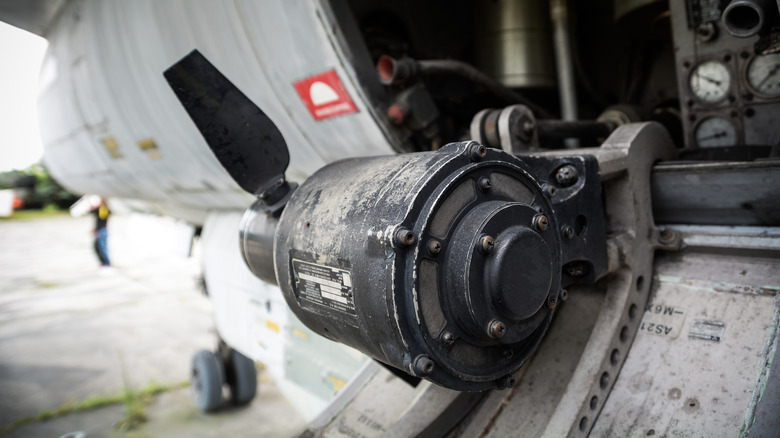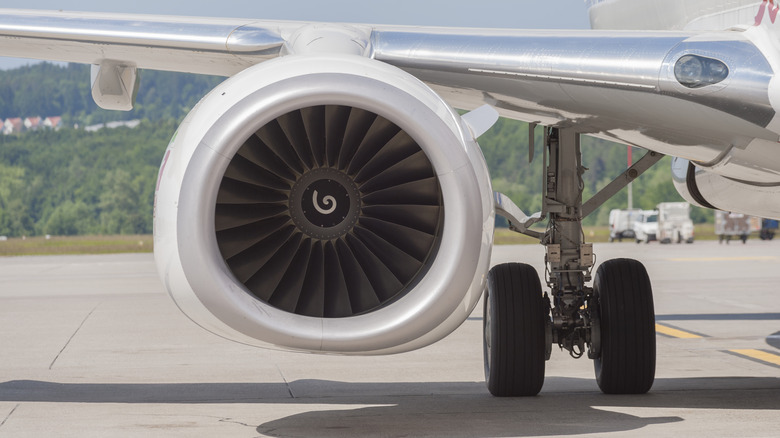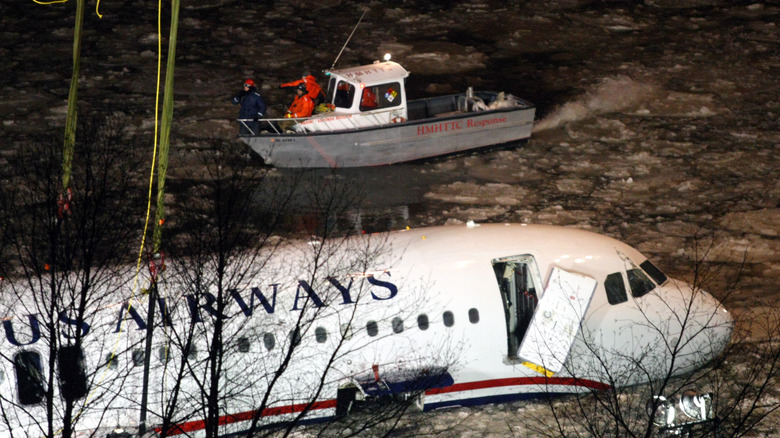With an estimated 9.4 billion passengers likely to take to the skies by the end of 2024, there is no denying the fact that taking a flight to reach your destination of choice is among the most typical things we do in our lives. Over the last century, rapid improvements in aviation technology and the relentless pursuit of safety have made flying one of the safest forms of transportation possible.
Advertisement
The learnings aircraft makers and airline companies have garnered from past incidents have had a tremendous impact on the design of most modern-day aircraft, eventually leading to the creation of safer, more reliable, and mechanically sound aircraft. This is why modern-day planes feature a bevy of safety-focused features and incorporate several levels of fail-safe mechanisms. These are in place to address almost all known and possible emergency scenarios that pilots might face.
One such fail-safe mechanism that is a common feature on most modern-day planes is called the RAT. While the acronym will almost certainly evoke a laugh, especially among laypersons, the purpose that these devices serve during emergencies is no laughing matter. As you may have guessed, the term «RAT» is an acronym, which, when expanded, reads «Ram air turbine».
Advertisement
What purpose do these Ram air turbines serve? When and how are they used? These are some of the questions we attempt to answer in this article.
[Featured image by Curimedia via Wikimedia Commons | Cropped and scaled | CC BY 2.0]
Why do airplanes have Ram Air Turbines?

Nattanon Tavonthammarit/Shutterstock
The most straightforward answer to this question is to say that Ram air turbines are designed as an emergency power source for airplanes during flight. To get a better understanding of this and to understand why planes need Ram air turbines, it is vital that we understand that an aircraft’s electrical system powers almost everything, from passenger-focused things like air-conditioning and mood lighting to critical flight-focused things like instrumentation inside the cockpit, as well as navigational aids and tools.
Advertisement
A fully functional electrical system, therefore, is vital to the safety of the aircraft. The electrical power needed to keep these vital systems of modern-day planes functional is primarily derived from their powerful engines. On the ground, when the engines are not running, planes derive power from the Auxiliary Power Unit (APU) which is a separate power source, distinct from the engines. The APU is a frequently used power source for airplanes while on the ground, and it keeps energy-intensive functions like air conditioning functioning even when the engines are powered off.
Modern-day planes also feature a complex hydraulic system that is used to control flight surfaces like the elevators, ailerons, and rudder. These critical systems require electrically operated hydraulic pumps to operate, all of which are powered by the airplane’s powerful jet engines.
Advertisement
In the event of an emergency — like an engine failure — the APU can provide power to backup EMDPs (Electric Motor Driven Pump) that will operate the hydraulic systems. In case the APU fails as well, there are backup batteries that can do the job for a while. If these batteries run out of power too, leaving the aircraft with no other power source, that is where the Ram air turbines come into the picture.
How does a Ram air turbine work, and what does it look like?

Ethamphoto/Getty Images
Given that the Ram air turbine is only used during emergencies, it is very rare to see one in action. Most modern-day Ram air turbines resemble miniature windmills. That design choice is not by accident, given that these tiny turbines are entrusted with the same job as windmills — to generate electricity.
Advertisement
The shaft of the Ram air turbine’s propeller is connected to an electrical generator. Once deployed, the spinning action of the propeller generates a small amount of electricity that will power onboard systems that will help the pilots land the aircraft safely. On some aircraft, RATs may also be used to maneuver flight surfaces that have been rendered inoperable due to lack of enough power reaching the hydraulic pumps that help move them.
On most modern-day aircraft, Ram air turbines are automatically deployed once the onboard systems detect that the aircraft has experienced a significant loss of power from the engines, APU, and backup batteries. It is also pertinent to note that the amount of electricity generated by the RAT depends a lot on the speed at which the aircraft is traveling through the air.
Advertisement
Are there instances of Ram air turbines saving lives?

Daniel Barry/Getty Images
Since Ram air turbines began being deployed on aircraft over 50 years ago, they has saved the lives of an estimated 2400 people. A notable aviation incident involving a Ram air turbine was US Airways Flight 1549. This 2009 incident involved a US Airways Airbus A320 aircraft that hit a flock of birds shortly after take-off following which Both the engines failed. Facing full loss of power, the pilots were able to maneuver the plane with the help of emergency power supplied by the Ram air turbine. The plane eventually made an emergency landing in New York’s Hudson River. Luckily, all passengers aboard the plane escaped alive. This incident was also the basis for the popular 2016 movie, «Sully.»
Advertisement
Another notable aviation crash that saw the deployment of a RAT was the «Gimli Glider» incident that took place in 1983. The aircraft involved in the incident was an Air Canada Boeing 767 aircraft operating as Flight 143 which ran out of fuel because of a calculation error. After being airborne, and finding themselves losing both engines, the pilots turned the aircraft into a giant glider. The incident led to the deployment of the Ram air turbine, which generated enough power to keep all critical flight systems up and running. The plane landed safely at a Canadian Air Force base in the town of Gimli, Manitoba, which had been converted into a race track.
Another notable incident involving RAT was the 1996 hijacking of Ethiopian Airlines Flight 961. The hijacking and unreasonable demands from the hijackers led to the aircraft running out of fuel and crashing into the ocean near a beach as onlookers watched in disbelief. Unfortunately, this crash cost 125 lives, although 50 people did survive.
Advertisement